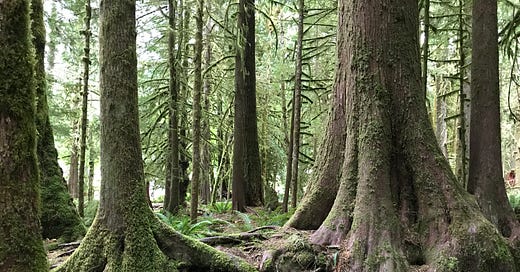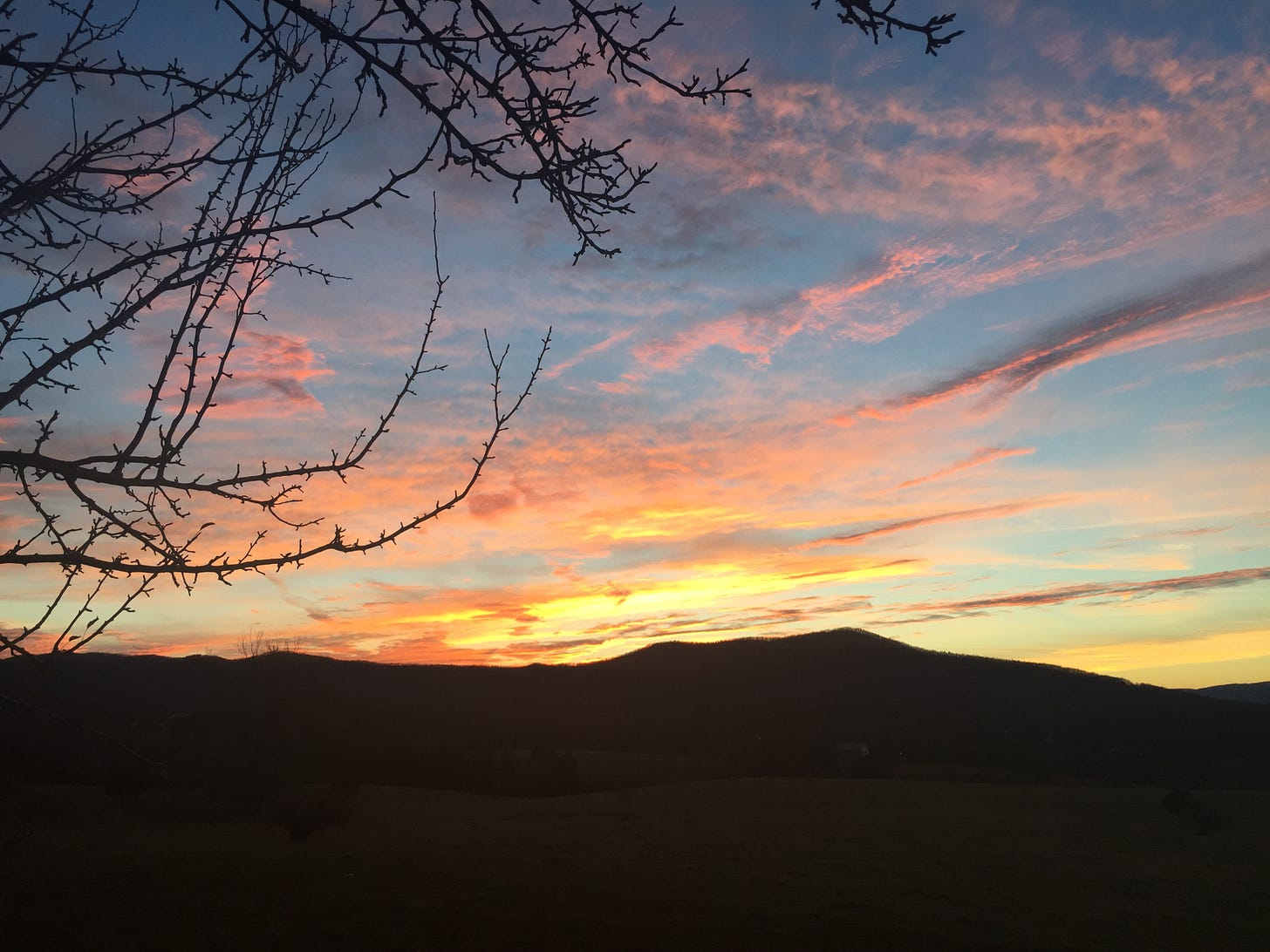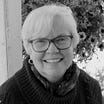Nature writer, n. A person who delights in paying attention, being astonished, and telling about it.1
“So many moments in nature bring liveliness, confusion, or revelation, and they seem too rich and full to keep to oneself. Nature writing allows me to share what is amazing, beautiful, heartbreaking, or surprising with others. I think it’s part of our human nature to want to share what brings us alive, and writing is one way we can do that.” ~ Leah Rampy
Welcome to Season 2 of the Reciprocity interviews. My inbox is full of treasure in the form of lovingly observed writing about place, encounters both wild and gentle, imaginative kinship and renewed reciprocity. These thoughtful, talented writers kindled in me the desire to learn more about them.
Today’s guest,
, is a writer, speaker, retreat leader weaving ecology, spirituality, and story. Author of award-winning Earth & Soul: Reconnecting amid Climate Chaos (2024) and co-author with Beth Norcross of Discovering the Spiritual Wisdom of Trees (2025). I’ve known Leah IRL for years through the West Virginia’s Rolling Ridge Study Retreat community, where I’ve co-lead retreats with her as a participant. I’ve heard amazing things about the retreats she leads—Singing the Trees and Light for Dark Times: Tending Brigid's Fire Through the Ages—and hope to make it to both one day soon.Her newsletter, Reweaving Earth and Soul, is a collection of conversations about living fully alive and deeply connected as we forge a path toward kinship and the well-being of all Earth. Whether she’s writing about exploring the edges, kindling hope in the midst of despair, or centering ourselves in what we love, Leah’s essays are grounding, wise, and inspiring.
Why are you drawn to nature writing?
When I am out of doors, especially in wilder places, my entire body finds a new rhythm: senses sharpen, listening deepens, and my attachment to my “self” loosens so that what seemed so important only a moment ago falls away, and I am present to what is now. I find inspiration, support, and connection in the living world; writing is a way of exploring that connection. I’m a slow writer, and I rarely get to the real point until I’ve rewritten an essay or a chapter several times. Throughout that rewriting process, I’m working out what I know at a deeper level than I have been able to articulate before. I’m probing for questions that lurk below the surface. I’m doing my best to open to wisdom that sometimes comes from beyond me. In this way, writing expands and shapes my personal understanding.
So many moments in nature bring liveliness, confusion, or revelation, and they seem too rich and full to keep to oneself. Nature writing allows me to share what is amazing, beautiful, heartbreaking, or surprising with others. I think it’s part of our human nature to want to share what brings us alive, and writing is one way we can do that. Such sharing can weave the threads of connection, enabling your experiences to widen as you explore what I share, deepening my experiences as I read your thoughts about the natural world.
How does writing about nature affect you, in your work or personal life?
Writing about nature reminds me of what I love and reinforces my commitment to Earth and her beings. Writing is not separate from action. When I have written about a species or ecosystem, I am more willing to take a stand for them, to speak out when they are in danger.
I seldom write essays or chapters on any given topic without doing additional research so that I can incorporate the latest discoveries. If I’m writing about a location or ecosystem, I try to visit that site and connect with the beings there. Even in areas where I have acquired some knowledge over the years, I feel called to learn more before I write. Digging deeper, becoming better acquainted with other beings and their home, really does expand my heart. If those lives or their habitat are being harmed, I am called to respond.
One recent example of how I am affected is a huge water bottling plant that was proposed in our county. There were so many things wrong with the proposal, including the fact that we are in an area of karst geology (think sink holes and caves) where water flows underground in ways we don’t fully comprehend; the fact that our county has been in a period of sustained drought; the number of nearby farmers and homeowners who depend on wells for drinking water; the excessive use of plastic; an estimated 160 large trucks each day that would transport the products through the very narrow streets of a small historic town; and a proposed site that is near an area previously contaminated by chemicals.
If all that wasn’t enough, the proposed groundwater extraction would impact a wetland that supports a rare ecosystem of biodiversity significance! Over 80% of West Virginia’s wetlands already have been lost, and this would add to the devastation of precious and unique ecosystems. While my knowledge is far from comprehensive, I have learned enough about wetlands as a nature writer to be alarmed — and I felt compelled to speak out. That’s the effect of nature writing in my personal life.
One more point: I lead about eight, Earth-focused weekend retreats each year. Perhaps it goes without saying, but as a retreat leader, my writing weaves through all that I do when I invite participants into conversation and practices.
While outside, have you ever experienced feeling small, lost or in danger?
When I was a young child, our family lived in the middle of Kansas in a home surrounded wheatfields, pastures, and oil wells. There were no other homes or towns visible in the distance, no bright lights to dim the stars. Scorched by the summer sun, our home was slow to cool down at day’s end, making it difficult to sleep at night. My dad would carry me out to the picnic table where I could lie on the tabletop until I fell asleep. I don’t recall my parents saying much as they sat beside me. But I do recall the brilliance of the stars as I traced the path of the dippers and followed the brushstroke of Milky Way painted across the sky. I felt incredibly small, engulfed in incomprehensible magic.
Fast forward to times when our children were small. We would drag sleeping bags outside the farmhouse in the Shenandoah Valley of Virginia. The lights of the distant Washington, DC, area were blocked by the nearby Blue Ridge Mountains so the stars shone brightly. Lying on our backs, we would watch the night sky, glimpsing meteors streaking by, musing about the tiny speck we inhabited within this vast realm of deep time and space.
These experiences led me to embrace the 13.8-billion-year Cosmic Story, a description of an unfolding universe that opens us to the awe and wonder of our origin story. A deep bow of gratitude to Thomas Berry, Brian Swimme, and others who have contributed so much to helping us explore the cosmic journey from the great flaring forth to the arrival of humans, the youngest leaf on the family tree.2
What’s a favorite memory of nature from your childhood?
Cottonwood trees rank right up there! Although they are sometimes considered a weed by people who live among an abundance of trees, for those of us who treasured shade from a tall tree that could withstand the low rainfall of a Kansas prairie, cottonwoods were the perfect tree. Their shiny, triangular leaves glisten in the light and the flat stems allow them to twist and turn in the wind, making delightful music as they wave. Many nights I would fall asleep listening to their song outside my open window. During the day, these trees lured me to their shade.
I also have strong memories of working together in our family vegetable garden and the taste of the harvest. Sitting on the back step shelling peas with my mother, eating those tasty, sweet nuggets gifted from sunshine and soil – the memory lingers with me even today. Fresh sweet corn, tomatoes from the vine, green beans and new potatoes, still taste like home to me. We lived close to the land without fanfare, and that sense of connection echoed within me for years, even when cities were my home.
What do you hope for, for your writing?
I often say that I write at the intersection of ecology, spirituality, and story because this is where I want to spark conversations. My strongest motivation for writing is to be in conversation with the reader.
I hope to encourage readers to summon the courage needed to look into the face of loss and grief, to bear witness to what we are destroying with our choices, to embrace our place within the ecosystem in which we live, and to claim kinship with all beings who share this world. Lofty goals, I know. I continually fall short, but it helps me to reaffirm these intentions.
We are all on a journey of heart and soul to claim our individual gifts and offer them to Earth who so generously shares of herself. Simultaneously, we are invited to reweave connections to this living world. These journeys are strands in the great weaving that move us toward what our wise elder, Joanna Macy has called “The Great Turning” or that Robin Wall Kimmerer might lift up as a time of mutual flourishing. And this work requires community.
I hope that my writings keep inviting us into a community of inquirers who come together to support each other in edge times. This might mean pulling each other back from the cliff edge, offering a hand or a shoulder to cry on when times get tough, and sharing the best of who we are for the benefit of all. And, always, I hope we will listen together for the dream of the living world, respect her agency and wisdom, and respond to her invitation to co-create the future.
A writer or other creative artist who makes you hopeful for humanity and the earth.
Let me begin with two wise women who have brought so much to nature writing, Joanna Macy and Robin Wall Kimmerer. Regardless of age, they each offer deep elder wisdom. They do not hesitate to share their heartbreak for all that has been lost, and still, they find beauty and possibility in what remains. I’ve had the privilege to participate in retreats led by these women; their sheer presence is truth, integrity, compassion, and courage.
J. Drew Lanham is another writer who breaks my heart open and then douses it with beauty. Terry Tempest Williams, Aldo Leopold, Rachel Carson, Wendell Berry, Thomas Berry, David George Haskell, Sy Montgomery, Cal Flyn. And, so many beautiful writers and photographers are on Substack that I hesitate to name one lest I leave out others. Suffice it to say that if I’m following a Substack, it’s because I’m learning from or inspired by that writer in some way – and for that I am deeply grateful.
Each season, we donate 30% of paid subscriptions to a worthy environmental cause. This season, it’s Women's Earth and Climate Action Network (WECAN) International. For The Earth And All Generations - Women Are Rising For Climate Justice & Community-Led Solutions. Track past and current recipients here.
What did you enjoy most about this interview? I’d love to hear from you. Or share it with others by restacking on Notes, via the Substack app. Thanks!
Notes and links
If you’d like to participate in this interview series, please DM me on chat, or reach out via email: gabrielli-dot-julie-at-gmail. Find previous interviews here.
For more inspired nature writing and artwork from the best of Substack, check out the articles in NatureStack journal.
In further service to Substack’s nature writers,
curates this lovely directory of nature-focused writers:thanks, Mary Oliver
Editor’s note: I’m fangirling this way of expressing that, in creation stories of oral, place-based people, humans arrived at the Big Party of Life last.












What a warm, open heart.
Dear Leah, your whole essay has such a depth of feeling and companionship for nature, I loved every word but this is so evocative of my own rather bohemian childhood,
"But I do recall the brilliance of the stars as I traced the path of the dippers and followed the brushstroke of Milky Way painted across the sky. I felt incredibly small, engulfed in incomprehensible magic."
Thank you for the reminder. 💚